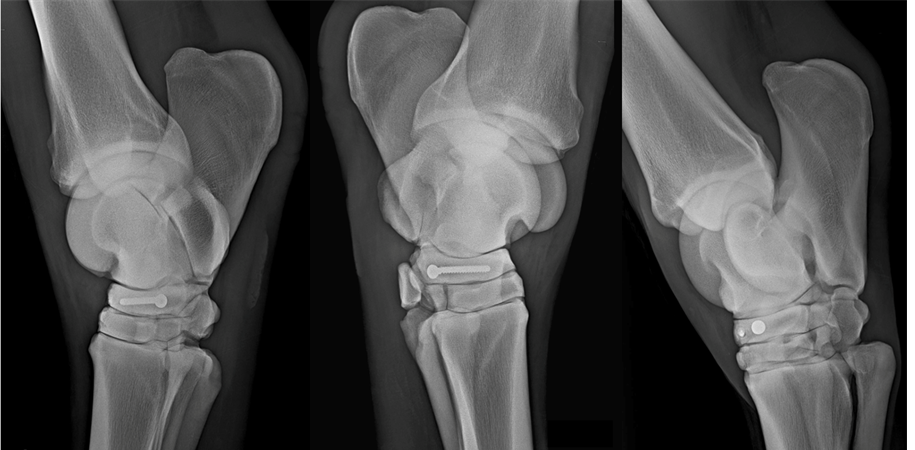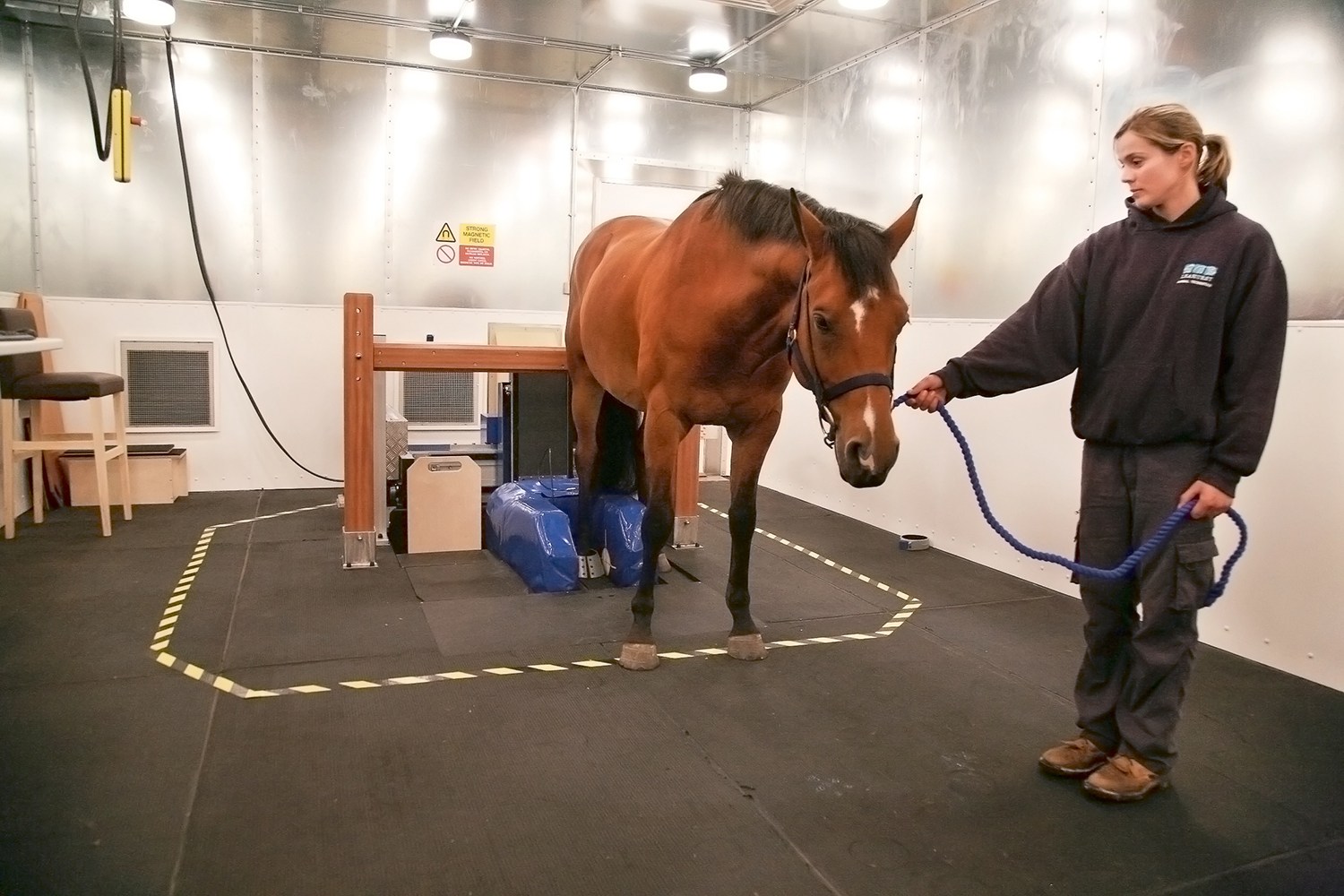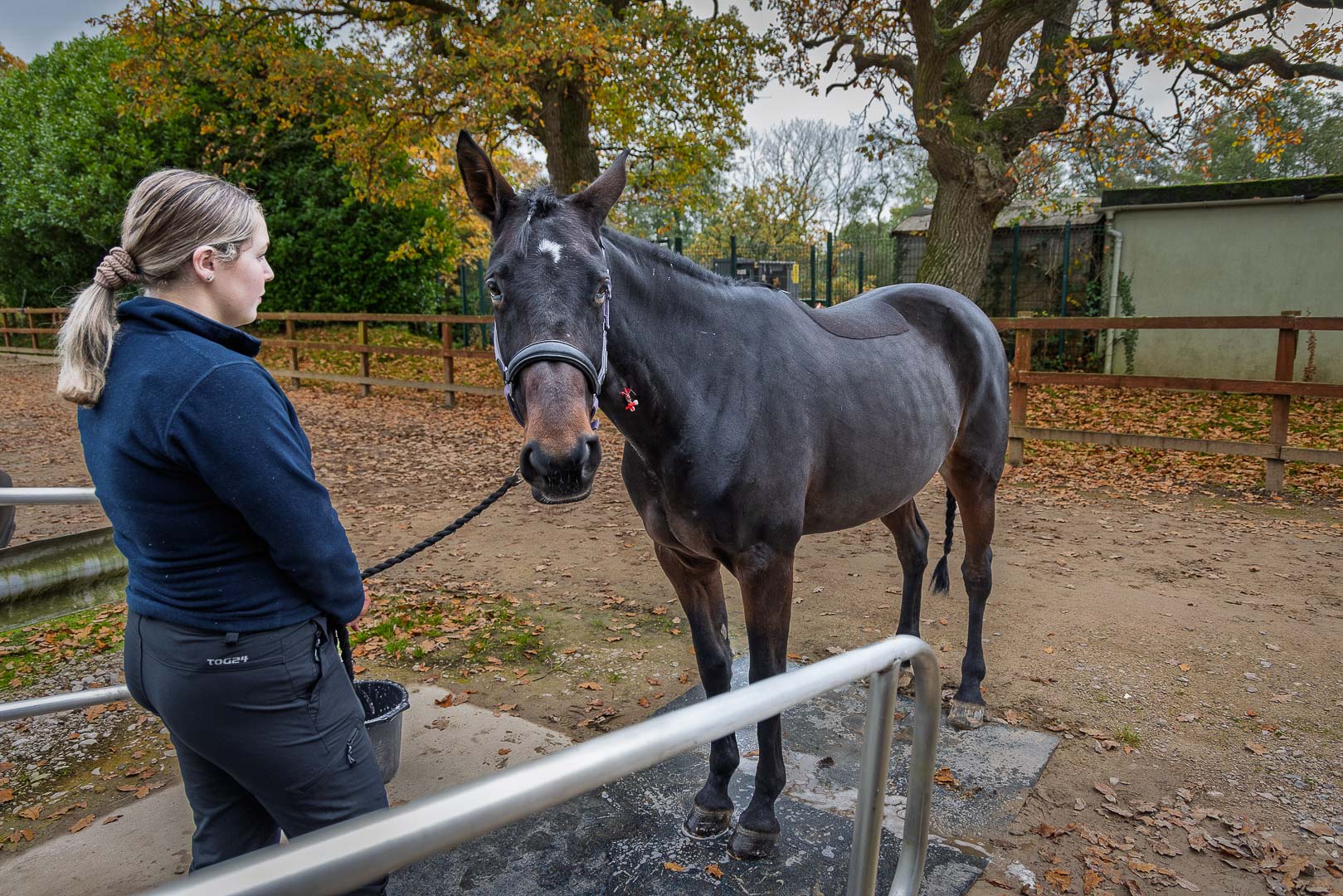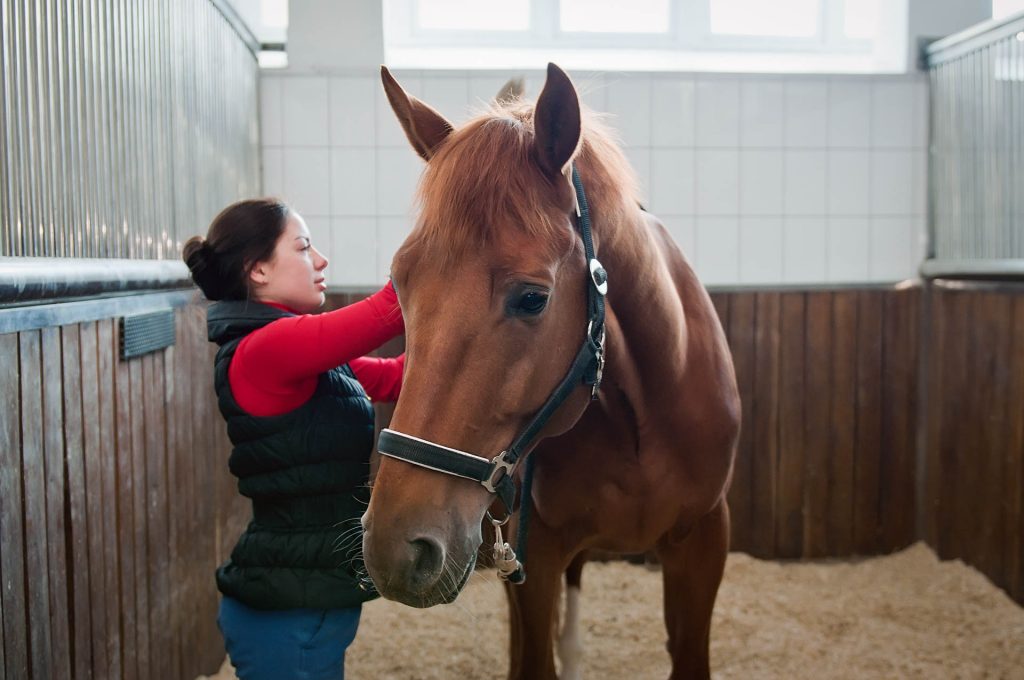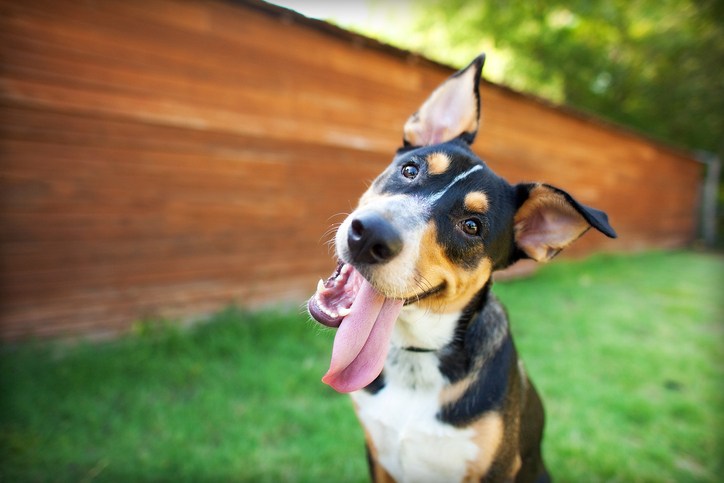Summary
Already a centre of excellence for equine lameness, 2024 marked a major milestone for the team at Grosbois. The addition of a Standing Equine MRI (sMRI) completed the missing puzzle piece in their advanced diagnostics suite, enabling detailed diagnoses that were once impossible with traditional methods.
The missing piece of the puzzle
Established over 30 years ago at the prestigious Grosbois training estate outside Paris, Clinique de Grosbois has acquired an international reputation for locomotor pathology.
Their dedicated team is headed up by Associate Veterinarian, Dr Fabrice Rossignol, and Dr Aude Heitzmann. With over twenty equine professionals at the practice, they aim to provide the best care for every patient they see. The team’s combined knowledge and expertise include surgery, medicine, locomotor pathology, ophthalmology, and dentistry to offer a comprehensive range of services to every patient, whether a high-level athlete or a recreational horse.
Always at the forefront of innovation, the practice excels in research and pioneering new surgical techniques. Already a centre of excellence for equine lameness, the addition of a Standing Equine MRI completed the missing puzzle piece in their advanced diagnostics suite, delivering superior images of soft tissue and bone structures and enabling detailed diagnoses that were once impossible with traditional methods.
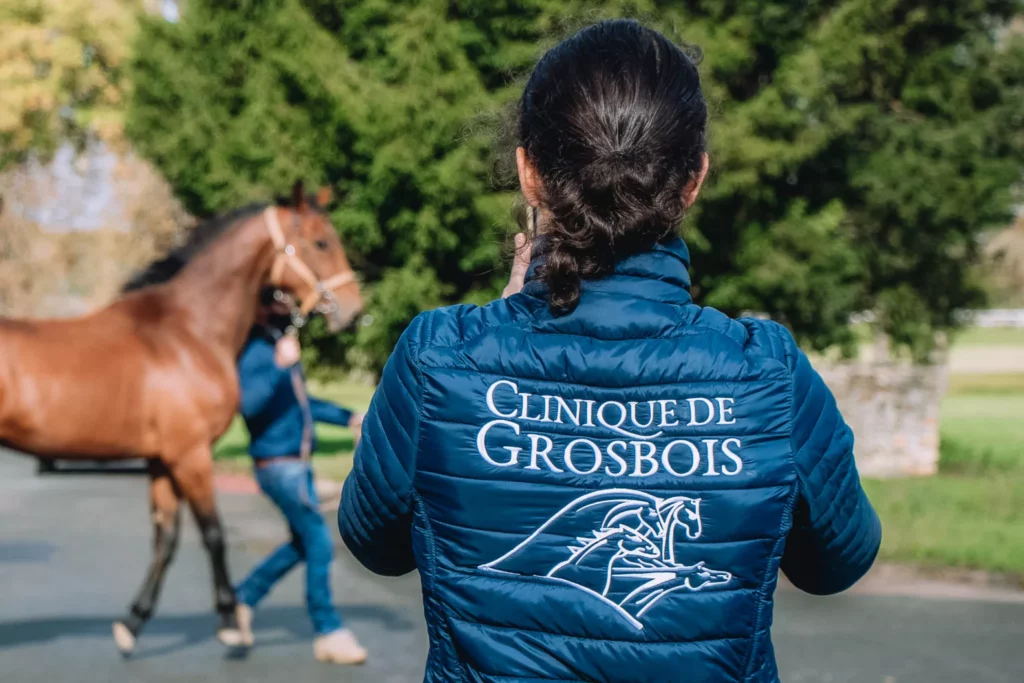
Grosbois typically sees a mixed caseload comprising race and sports horses. Frequently, they will see horses with injuries sustained from chronic or acute trauma like fractures sustained by racehorses or degenerative changes in sports horses and other disciplines. Grosbois firmly believes that, by better serving their horse-owning community, an increase in the level of care they can provide will pay dividends to all parties, as Dr. Rossignol and Dr. Heitzmann explain:
Adding Standing Equine MRI to the practice has meant that the missing piece of the puzzle is now in place. We can finally offer our clients the advanced imaging they demand for the health of their horses. The difference it has made to both our practice and our customers is already notable.”
Why Standing Equine MRI?
The decision to add a Hallmarq Standing Equine MRI to their advanced diagnostics site at Grosbois was driven by a desire to offer an advanced imaging technique to horse owners in the area. It was also driven by increasing demand from both local horse owners and referring veterinarians keen to access the same level of sports medicine that human imaging affords. Already, that decision is proving a success.
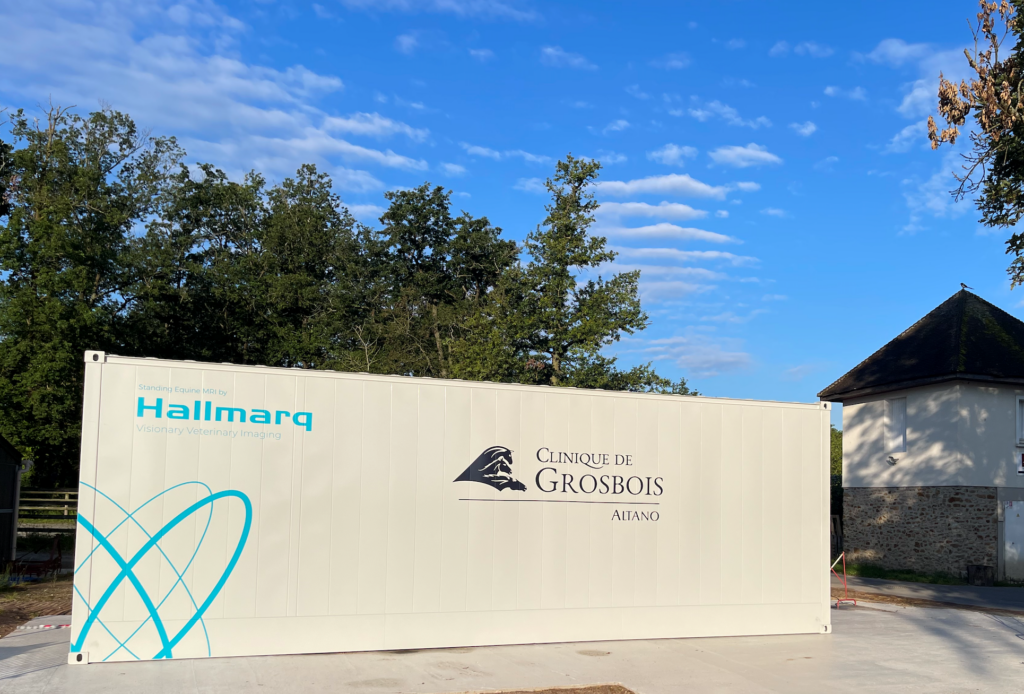
With the term success highly subjective, we asked Associate Veterinarian Dr. Aude-Gaëlle Heitzmann what it means to her. The reply was an emphatic:
Standing Equine MRI has provided the missing piece of the puzzle at Grosbois. It provides the detailed images we need to make an informed diagnosis. Removing the guesswork means a tailored treatment plan can be made for every patient we see. It is rewarding for us as a team and reassures our horse owners that they are in safe and capable hands.”
Dr Aude-Gaëlle Heitzmann-Ziegler, DVM, DESV, Certifée ISELP, Spécialiste en pathologie locomotrice
Initially working their way through a backlog of referrals, the practice has seen a steady continuation of those numbers as demand for the gold standard in equine lameness diagnosis continues to grow. In only nine months, sMRI has undoubtedly helped Grosbois drive its orthopaedic caseload. And, if success can be measured in numbers, then scan volume data supports the practice’s initial decision to install the modality:
The lameness caseload for Grosbois has held at a consistent 10 scans pcm and shows no sign of waning.
Since July 2024, they have successfully scanned a total of 97 horses with this precise and non-invasive modality, aiding diagnoses and enabling tailored treatment plans.
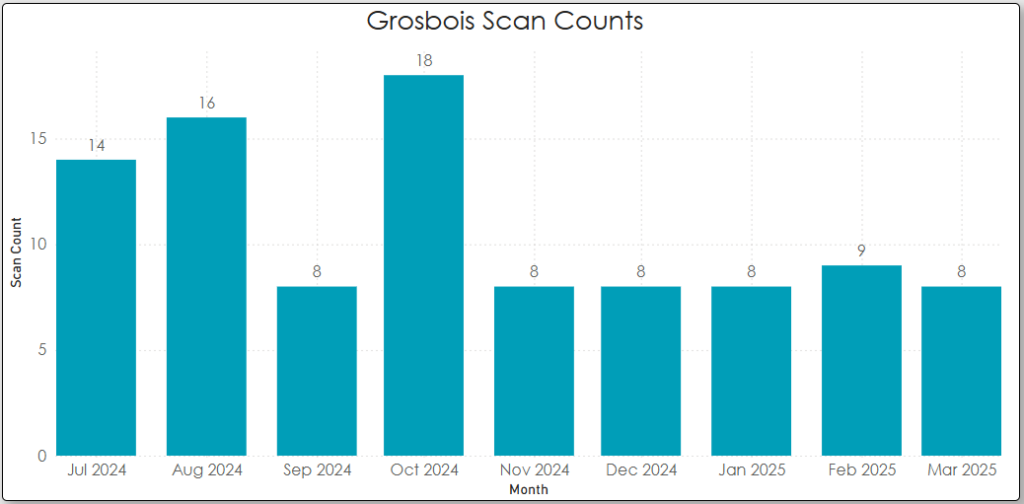
Fluctuations in data illustrate just how seasonality affects the number of horses scanned in the clinic. For example, competition season may see an increase in referrals as sport horse disciplines carry a higher risk of lameness and soft tissue injuries. With numbers declining over the winter months, horses are often stabled with less turnout and a steadier workload.
MRI provides the answers
There are some cases where only MRI will provide the answers. For Grosbois, this proved to be the case for a racehorse recently diagnosed with abnormal sclerosis of the central tarsal bone. Not clearly visible on radiographs, a comprehensive MRI study was undertaken. With the application of Hallmarq’s enhanced motion correction software, iNAV, a clearly defined fracture line and area of bone oedema-like signal was identified which enabled surgical planning for fixation of the fracture.
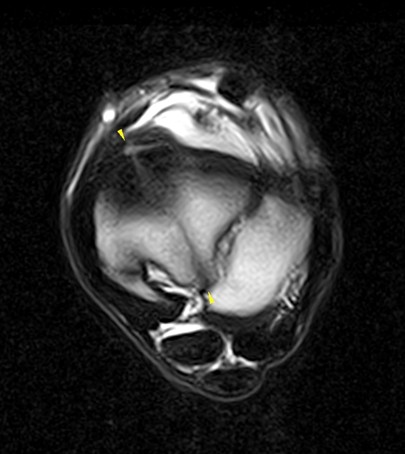
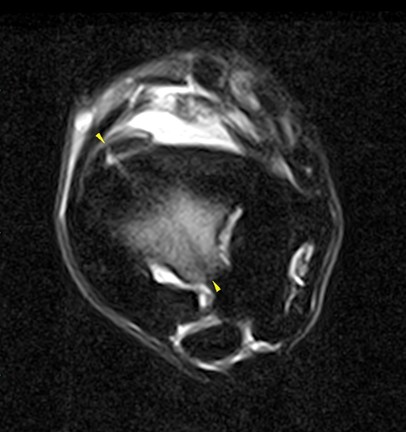
Standing MRI has considerably improved our assessment of lameness cases. In addition, the introduction of iNAV allows us to obtain images of exceptional diagnostic quality even for difficult areas, such as the tarsal region. In the present case, the fracture line and the area of bone oedema-like signal are clearly defined with minimal motion artifacts, which would not have been possible otherwise.”
Dr Claudia Fraschetto, DVM, DESV, Dipl ECVSMR, Spécialiste en pathologie locomotrice
What’s next for Grosbois?
It has been a remarkably busy start for Clinique de Grosbois since they decided to install a Hallmarq Standing Equine MRI system. In that short period, however, the practice has seen the benefits of offering the gold standard in advanced imaging of the equine foot, with horse owners and referring veterinarians in the wider area consistently sending lameness cases to them.
Has their decision to add low-field MRI to their practice made a difference? It is a resounding yes with plans for the future to include a scanner. We look forward to seeing what 2025, and the years following bring for Grosbois and will continue to support their advanced imaging journey all the way.
For more information on Clinique de Grosbois click here
For more information on Hallmarq’s Standing Equine MRI click here
Summary
Already a centre of excellence for equine lameness, 2024 marked a major milestone for the team at Grosbois. The addition of a Standing Equine MRI (sMRI) completed the missing puzzle piece in their advanced diagnostics suite, enabling detailed diagnoses that were once impossible with traditional methods.



